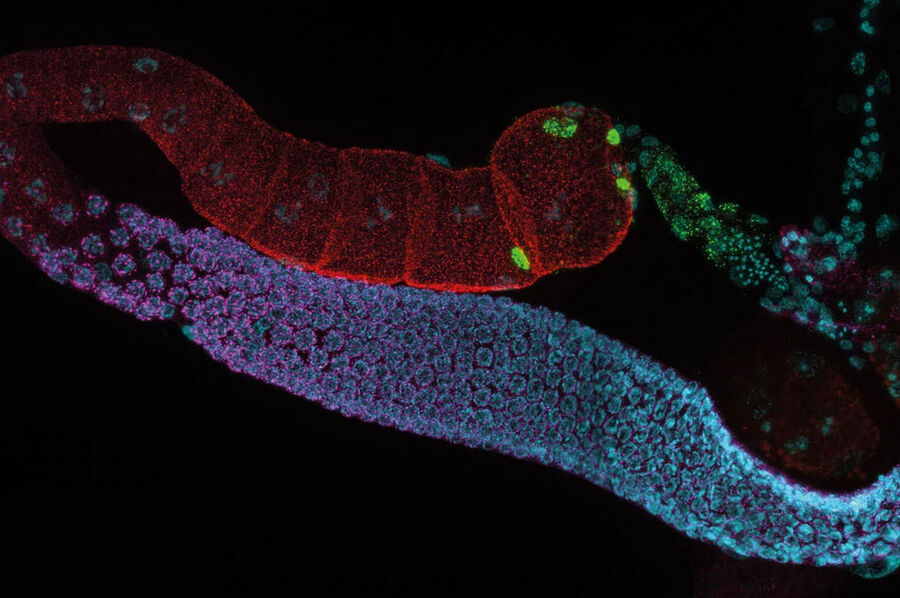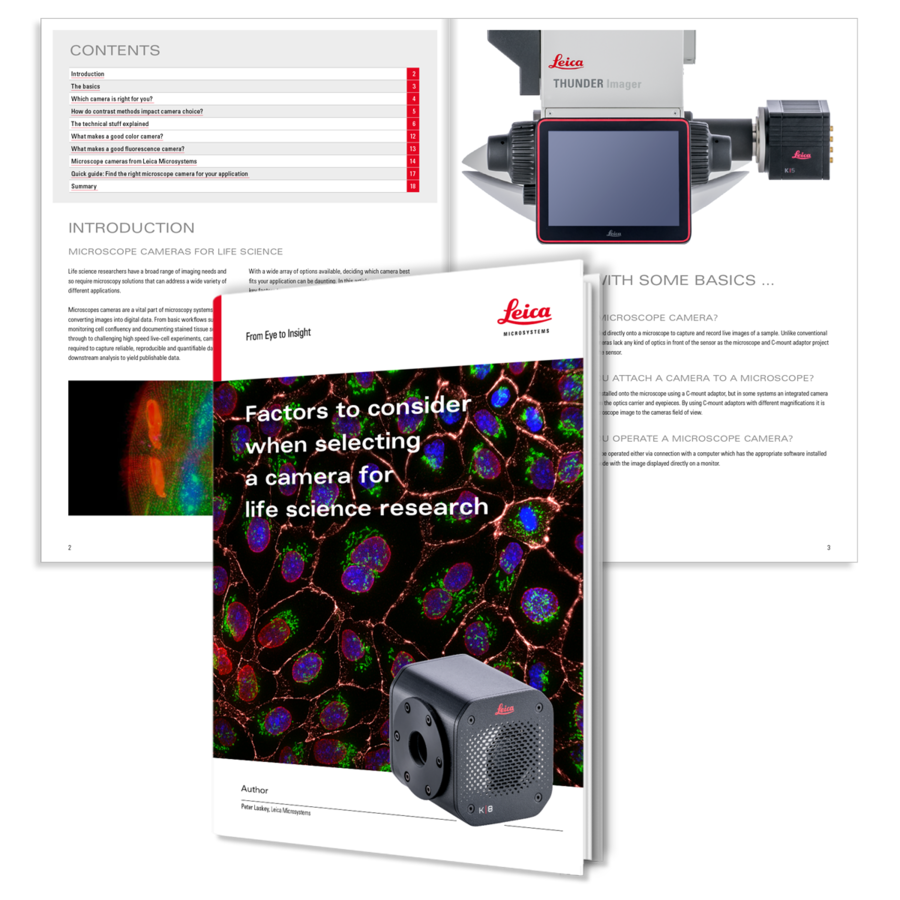Microscope cameras for life science
Key factors to consider when deciding which camera is right for you

Capturing insights into life
Life science research has a broad range of imaging needs, requiring microscopy solutions to address a wide variety of different applications.
Cameras are a vital part of microscopy systems. From basic workflows such as monitoring cell confluency and documenting stained tissue sections, though to challenging high speed live-cell experiments, cameras are required to capture reliable, reproducible and quantifiable data for downstream analysis to yield publishable data.
Factors to consider when selecting a camera for life science research
With a wide array of options available, deciding which camera will best fit your experimental needs can be daunting. With this new camera selection guide, it’s now easier than ever before to select the camera of choice for your specific experimental needs.
In this guide, you will learn more about:
- What makes a camera good for fluorescence imaging or brightfield imaging, or both!
- The technical considerations of camera selection, with terms such as frame rate, quantum efficiency, bit depth, dynamic range, and much more, explained.
- How to decide which camera is right for your life science microscopy experiments.
- Which Leica Microsystems camera may be best for you.

